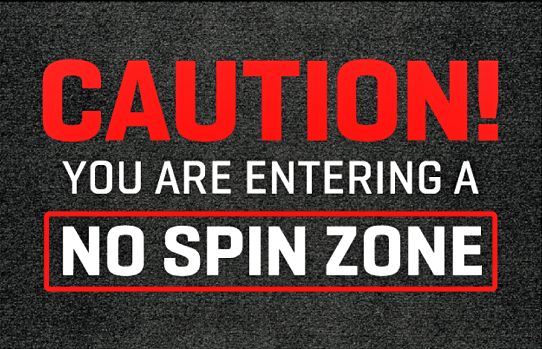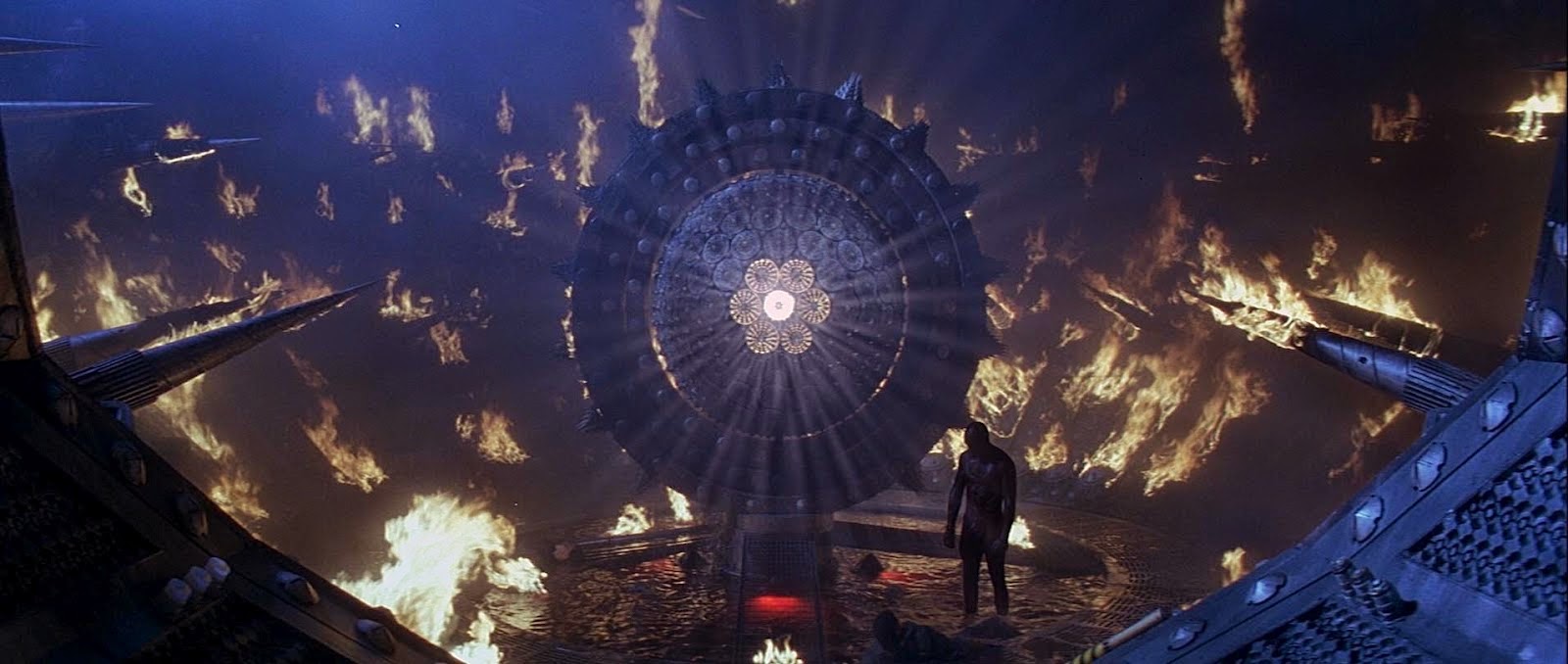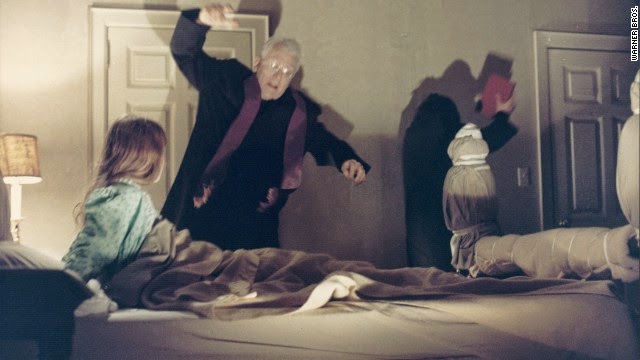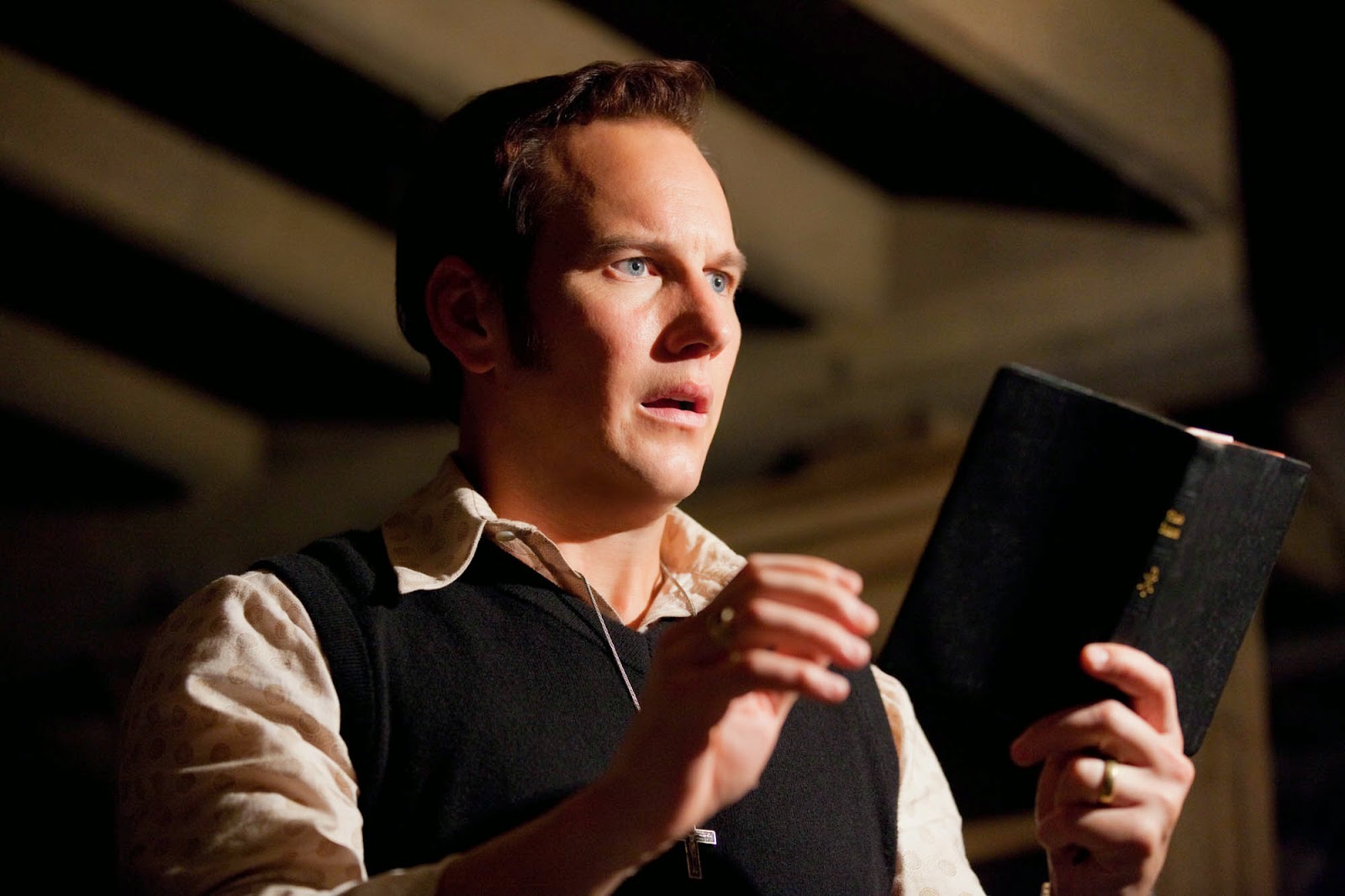Week 1
We went over the history of horror films and its codes and conventions. I personally didn't think that there was much history to be studied when it came to horror films, but as this week went on, I realized that there was plenty. The codes and conventions are: Weapons, Death, Sounds/Music, High Contrast lighting, POV camera angles. When it came to the use of weapons, they were never used for quick kills. The killer tries to make the death intimate, slow and painful. Weapons used are usually blades, and other sharp objects. Death is is natural for the genre of horror. There's no better way to scare an audience than to have them witness someone's untimely death. Sounds and Music are used to help set the atmosphere. Creepy sounding music is always a plus when it comes to invoking fear. High contrast helps shake the audience of their comfort of the natural look of the world, allowing them to scare easier. POV camera angles are the best way to get the audience to really feel like they're in the characters shoes.
The Cabinet of Dr Caligari
Week 2
We looked at the different sub genres of horror films. I never thought that there would be so many. Here are some sub genres of horror: Body, Natural, Psychological, Slasher/Teen slasher, Gothic, Monster, Demonic, Supernatural, Splatter, Vampire, Zombie, Action, Religious, and Gore Porn. I'm fairly surprised that last one was even a sub genre. I believe that The Cabinet Of Dr. Caligari was a psychological horror, because in the end , it seemed as though all of that was just in the head of one person.
Warning! Spoilers Inbound!!!
To be honest, i'm not sure what i think of this movie. It had the proper elements of a horror movie, and the actors did well, but the premise was strange. There was a crazy boy named Tom who apparently kidnapped women he messed around with and locked them up in his parent's basement. In the basement, there was a garden, and these women were to the garden's angels. He kept them shackled down there, with no sunlight, for an extreme length of time. Many of them passed, but a girl named summer helped put an end to this, even though that was not her objective. Summer traveled around looking for her father because she never met him and her mom didn't want anything to do with him. She ended up in the small town where Tom lived, slept with him, but when she tried to escape, she was captured and placed down in his garden. At some point Tom manged to figure out that she was actually his sister, it didn't stop him from loving her the way he did, but he did let her out of the garden form time to time. Summer and Tom's father was, to me , hilarious and crazy. The way he handled situations gave the movie some comedy, but I wasn't surprised when he came to cause trouble. I was disappointed about how Tom is a crack-shot with a rifle, but couldn't manage to kill his father; The father killed Tom and his mom, but left summer alive because of his sick, twisted desires. I was glad to see summer kill him in the end, but he could have died in a more epic manner.
Week 3
In class, we went over film semiotics and camera angles.Film Semiotics
 |
| Roland Barthes |
A man named Roland Barthes argued that language is just one way of communicating, the others are:
- Hairstyle
- Body language
- Clothing
- Make up
- Sign: smallest unit of communication.
- Denotation: Dictionary definition
- Connotation: meaning associated with a sign.
- Codes: system of signs that can be analyzed.
Parts of a sign
- Signifier- physical form of a sign.
- Objective signifiers are placed intentionally.
- Subjective signifiers are not intentional, but can remind one of something they've experienced.
- Signified- concept that the signifier produces.
- Referent- the real thing.
Semiotic Triangle
 |
| (This is a simplified version) |
Camera Angles/Shots
- Long shot- focuses more on depth than width.
- Wide shot- focuses more on width and includes subject matter.
- Medium shot- a shot of a person from waist up.
- Close up- includes the shoulders and up.
- Over the shoulder- shot from over the shoulder of someone; usually used during the exchange of dialogue.
- High shot- shot from above the subject.
- low shot- shot from below the subject.
- 3/4 shot- a shot angle to show the subject at a 3/4 view.
- Profile shot- a shot of the subjects profile or side.
- Frontal- shot looking directly at the subject.
Evil Dead 2: Dead by Dawn
I personally found this movie hilarious. This movie is a comedy horror, and I believe they did a great job, especially when it came to their choice in make up:
Besides the comedy, the Evil Dead 2 had great camera work. They never kept the camera static for too long. This was first movie I saw where a 360 degree pan was used to establish location. They even had it to where the audience was viewing the scene from the monster's point of view. Over all, this is a great movie.
Week 4
This week was all about Mise en scene.
Mise en scene- the arrangement of of everything in a scene, and in the frame.
5 elements of Mise en scene
- Settings and Props
- Costume, Hair, and Make up
- Facial expressions and Body Language
- Lighting and Color
- Positioning of characters and objects within the frame.
Settings and Props
- Play an important part in film making and are not just backgrounds.
- They can be either built or found.
- Props are anything that's able to move in the scene.
Costume, Hair, and Make up
- Immediately informs the audience of the time period.
- Informs others of personality and social status.
- Signify certain individuals(like the antagonist).
Facial expression and Body language
- Facial expressions provide a clear indicator of how someone feels.
- Body language can often times communicate more information than talking.
Types of Lighting
- Low key- one main source of light, and some back lights.
- used to achieve silhouettes.
- can produce sharp contrast.
- High key- multiple lights.
- used to produce natural and realistic lighting.
- brightly lit sets.
- normally low contrast.
Positioning of characters/objects within the frame
- Positioning along with the other elements of mise en scene really allows the director to send the message to the audience without having the characters tell them.
- If done correctly, the audience will be able to figure out more about the characters and how they interact with their surroundings.
Darkness Falls
This movie is about and old story that's told in a small town called Darkness Falls. Why anyone would name a town Darkness falls is beyond me. The story is about a woman name Matilda Dixon. She was adored by the town children and even gave them a gold coin when they lost a tooth; eventually she earned the title "Tooth Fairy". She was burned alive in a house fire and incident left her skin extremely sensitive to light, so she wore a porcelain mask. Later, she was blamed for the disappearance of two children, and was hung. Before she died she laid a curse on the town; apparently if a child peeks when the tooth fairy is giving them their coin and taking the tooth, they will be brutally murdered by the tooth fairy.
This movie follows Kyle, the main character who peeked when Matilda was going to take his tooth. His mom was murdered trying to save her son. Kyle was taken to many facilities and foster care. About 12 years later, we get a better look at Kyle and how he has developed ever since the incident. We see that Kyle is on medications, which were most likely prescribed by the facilities he was sent to. The general public of Darkness Falls believed that Kyle snapped and killed his mother. Throughout his life, Matilda had constantly been there trying to kill him, but was well aware of her weakness. He always carried a bag full of flash lights with him at all times. His old friend Caitlin contacts him about her kid brother Michael who's going through the same problem, Matilda. It was only Kyle and Michael who really knew what was going on; everyone else believed that Michael was going crazy.
The way this movie focused on Kyle's flash lights, I was able to determine that he has been keeping Matilda at bay for those 12 years. Low key lighting was used when Matilda was going to strike, and high key was used to help with the sense of safety. This movie was alright, it was filled with plenty of jump scares and suspense. The ending was a bit bad though. It almost seemed as though the ending of the movie was rushed.
Week 5
This week, we talked about the importance of film editing.
Film Editing
- Editing is an extremely crucial part of the film production process
- George Orson Welles, “For my vision of the cinema, editing is not one aspect. It is the only aspect.”
Three key aspects of editing
- Technique: Cutting and Splicing.
- Craft: Consider the shot in itself and in relation to other shots.
- Art: How to arrange everything to create an impression.
Film Editing 2 Phase Process
- Selecting and arranging the available film into the final visual form.
- Mixing the soundtracks into the master soundtrack and then matching the soundtrack with visuals.
Major Approaches to Editing
- Continuity
- Makes the film look more natural.
- Discontinuity
- Makes the film look jumpy.
Correct editing can make scenes that are as boring as
someone going to pick up their newspaper extremely exciting.
Techniques:
- Jump cut
- Wipe
- Iris shot
- Freeze frame
- Fade in and out
- Split screen
Chain Letter
Before we watched this in class, I already saw a good chunk
of the movie. I have to say that this movie has to be a joke. In my opinion,
the plot was stupid. If you haven’t connected the dots yet, here’s a description
of the movie: a threatening chain letter was sent to a teenager, who then sent
it to four others, and so forth. If you delete or refuse to send the letter
within a certain amount of time, you’ll be killed the man who created the
letter. Apparently this man hates technology and is using it to kill off other
technology loving civilians, the end. The editing of movie was not bad, but
some of the extra effects used when a person received the letter were a bit
much. At one point in the movie, one of the characters received the letter and
the entire screen vibrated. At the beginning of the movie, there were a lot of
jump cuts that made watching the movie a bit disorientating. The use of special
effects and images became too much, and at some parts there were way too many
images on the screen. I know that the point of this blog is not to rate, but
talk about the movies we watch and how the topics in class tie in to the movies,
but after this movie I may have to start rating them. If you’re bored and need
something mildly entertaining to watch, I suggest you watch this; otherwise,
don’t bother.
Here'e the link to the full movie:
https://www.youtube.com/watch?v=iJ_9W-yILdY
or watch it below.
After
Here'e the link to the full movie:
https://www.youtube.com/watch?v=iJ_9W-yILdY
or watch it below.
Week 6
This week was all about Hybridity in film.
I'm not going to lie, the first time I heard my instructor say the word hybridity, I had no idea what she was talking about. For some reason my brain did not want to link the term hybrid to hybridity until I saw the word projected on the screen.
- Hybrids- anything composed of two or more different elements.
- Ex: A liger is a hybrid cross between a lion and a tiger.
- If the audience likes the hybrid film, the industry will continue to produce films like it.
- They do try to vary films a little to help keep them fresh.
Event Horizon
 |
| It might help to play this in the background while viewing this image https://www.youtube.com/watch?v=rbusENG6hCE |
I know I gave Chain Letter a hard time in last week's post, but this movie practically asked for what is to come. This movie was about a ship known as the "Event Horizon" that ventured out to Neptune, but was then taken over by this evil force from a different dimension. This entity managed to find its way to our dimension via the ship's core.
The core of the Horizon opens up a portal by bending time and space. The crew of the Horizon used this portal for quick travel, but something happened and instead of being sent where they were planning on going, they were sent to the other dimension where the evil force managed to take hold of the ship. This force creeps its way into the minds of others and brings out their worst fears and regrets. It eventually causes the crew to go mad and kill each other. The force then manages to send the ship back to our dimension with it still inside.
The main characters of this movie are the space crew that were sent to help the Horizon, and the scientist who created the ship, Dr. William Weir. From the beginning of the movie, Dr. Weir has been suffering from recurring flashbacks of his deceased wife speaking to him.
The ships crew is lead by Captain Miller and he never seemed too happy to be on that mission. When the crew arrived at the ship, they attempted to scan it for life, but were picking up strange readings, so they decided to board the ship in hopes of finding any survivors. There were no survivors, but the evil force began to screw with them.
At some point the mission went from rescue to demolition. Miller and his crew were fed up with the ship, but Weir was already under the influence of the evil within the ship.
Weir managed to destroy their ship, killing a member of the crew and almost launching the other one into space. Only two of the crew made it out of the event alive,Cooper (the stereotypical funny black guy) and Lt. Stark (the pretty lady). Captain Miller went down with the ship, supposedly taking Weir and the evil with him.
This movie was a hybrid cross between Science Fiction and Horror, with a little bit of comedy. In my honest opinion, I have to say that his movie was terrible! The only thing that made this movie remotely scary was the amount of jump scares that they forced down the audience's throat. I understand this is an older movie and that things were done a bit differently back then, but for today whatever they thought they were doing right, they did wrong. If this movie was called a Comedy Horror like Evil Dead, then this movie would've been alright. Most of the serious scenes in this movie were laughable.
I stated in last week's post that I may have to start rating these movies, so Event Horizon gets a 4.3. The camera work and use of CGI was well done, but the directing and writing for this movie was bad.
Week 7
This week was all about intertextuality in film.
Intertextuality- The use of elements that were originally from another media.
Scary Movie is a prime example of intertextuality. The antagonist of this movie is literally the same guy from Scream.
Intertextuality has its advantages and disadvantages.
- Intertextuality can allow the audience to connect with and learn a character faster.
- It makes it easier on the industry when it comes to creating characters.
- There are certain characters that don't need explaining once introduced.
- Character back stories can be left out, leaving more room for the actual story.
- Like everything else in life, too much of something will degrade its value.
- At some point it can become a bit cliche.
The Exorcist
We watched the 2000 remake of The Exorcist. Before we go into this movie, I would like to state that I did not get all the hype about this film. This movie was not in the least bit scary to me, and quite frankly I found a lot of the scenes in this movie hilarious. If I had watched this movie when I was a kid, I would've been scared.
This movie is about an ancient demon that was re-awakened during an archaeological excavation. One of the workers there was a priest and an archaeologist. At some point the demon possesses a little girl named Regan.
Before
Regan's mother, Chris, does everything in her power to help her daughter.
She has her looked at by many doctors, but all of the tests showed no signs of illness. Chris manages to convince a man named Karras to perform an exorcism on Regan.
Karras himself didn't have much experience with exorcism, so he contacted the Archaeologist/Priest from the beginning of the movie to help.
The exorcism itself failed, but Karras managed to convince the demon to take his body instead. When Karras obtained the demon, he took his own life by jumping out of Regan's bedroom window. This movie was pretty good for its time. Since I don't watch a lot of movies, I found it hard to spot any signs of intertextuality; but I did find some intertextuality in the Boondocks. They actually had a scene in one of their episodes that was similar to the exorcism scene in The Exorcist.
Week 8
This week was all about the sub genre of horror films known as slashers.
For some reason, Slasher films are at the bottom of the barrel when it comes to horror. If I had to blame anything, i'd blame poor writing. I feel as though the slasher sub genre has a lot of potential.
Slasher films normally involve:
- A psychotic masked killer.
- Often wears a mask.
- Supernatural like abilities
- Asexual/ Sexually Ambiguous.
- The main characters are away from parental supervision.
- The final/virgin girl:
- Defeats the killer.
- Masculine
- Unavailable for relationship
- Always a virgin.
- A strong sense of voyeurism.
- Weapons are always melee, sharp, and good for a slow death.
- Characters:
- Jock
- Outcast
- Prom queen
- Nice guy
- Nerd
- Token black guy
Three major horror film characters
(They're all slasher villains)
Can't go without mentioning these three when talking about slashers.
It's said that the slasher sub genre was born in the shower scene in Psycho.
Malevolence
This movie is about a killer kidnapper who trains the boy below to become a just like him maybe even better.
 |
| It turns out the boy kills the killer and takes his place. |
The movie starts out with a heist that goes bad, and the team ends up getting split up. One of them gets shot and killed in the operation.
The other two end up burying the body and making their way back to their rendezvous point to meet up with the other member of the team to split the cash. The member with the cash ends up having to jack a car and taking hostages because his vehicle caught a flat tire.
The hostages was a mom and her daughter. The daughter manages to escape and stumble into an abandoned building. The heist member manages to follow her there, but he gets killed by the movies killer. the killer takes his clothing and pretends to be him.
The killer manages to kill another member the criminal team, but ends up finding a challenge with the last member of the gang as he frees the mother and begins to flee. They find her daughter and they defeat the killer.
This movie was bad and I feel as though this does not deserve a rating from me.
Week 9
This week was all about spoofs and parodies.
Things to know about Spoofs
- There is no such thing as an original spoof.
- They attract corny people opposed to film connoisseurs.
- Has a huge following and rental sales.
- Cheesy lines.
- Usually low budget
- Involve exaggerated stereotypes, actions, and violence.
- Some scenes have no bearing on the story.
- Have a lot of sarcasm.
Things to know about Parodies
- Mimics in an absurd or ridiculous way the conventions and style of another work.
- Makes fun of another work by imitating some aspects of another work.
- Most humor is based on familiarity with plots conventions, and characters.
- Scream was one of the first horror films to parody the conventions of the genre.
Spaceballs is a good example of a Spoof/Parody.
The Conjuring
This movie is not a parody or a spoof, but it is the best movie we've watched in class. This movie is about a family that moved into a haunted house away from the city life.
The spirits of the previous owners began to haunt them, so they hired a ghost buster team to help relieve them of the spirits.
The mother of the family became possessed and tries to kill her daughter, but she's subdued for the inevitable exorcism.




















































